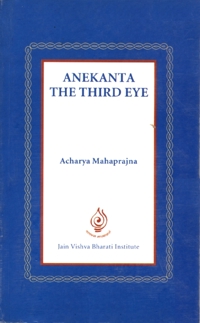
Anekanta is not merely a metaphysical concept. It is our complete guide to practical life. It is a great maxim for meditational practice. As long as passions are not assuaged, likes and dislikes are not reduced, the third eye of anekanta is not available for us.
To access anekanta we need meditational practice that will reduce attachments and aversions. As passions are assuaged and a balance is found in like and dislike, our third eye of anekanta develops. All views seem to change and the matter remains as only matter. It is neither favourable nor unfavourable.
When there is no like or dislike, how can there be anger? Anger is not born of circumstances alone. As long as man likes one and dislikes another, anger will never subside. As attachment reduces, and the more it reduces, anger will reduce in the same proportion.
 Acharya Mahaprajna
Acharya Mahaprajna
